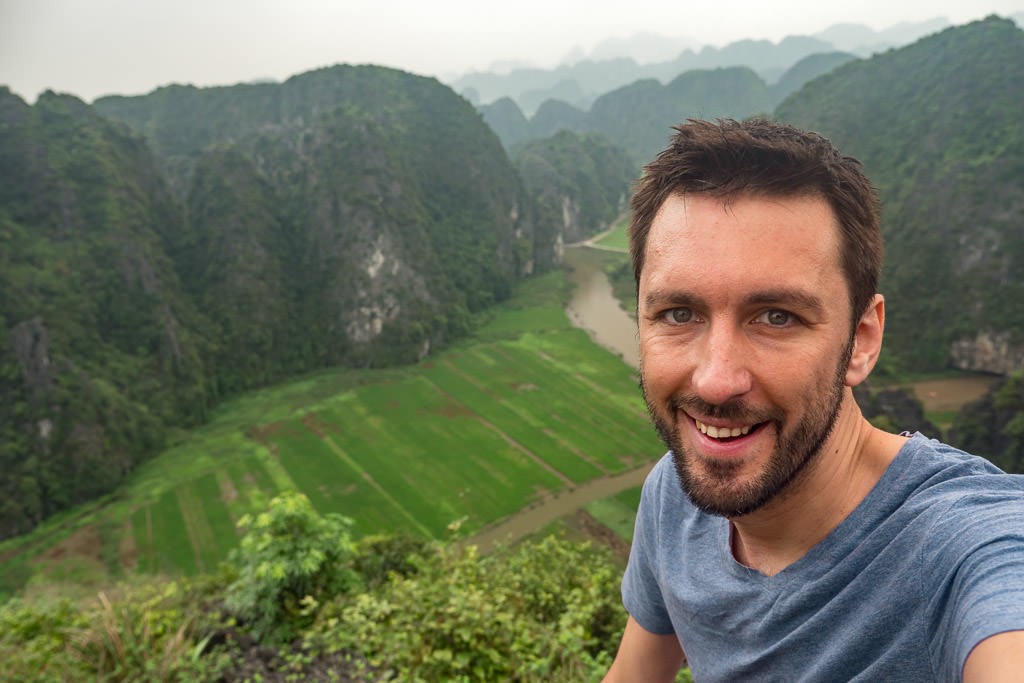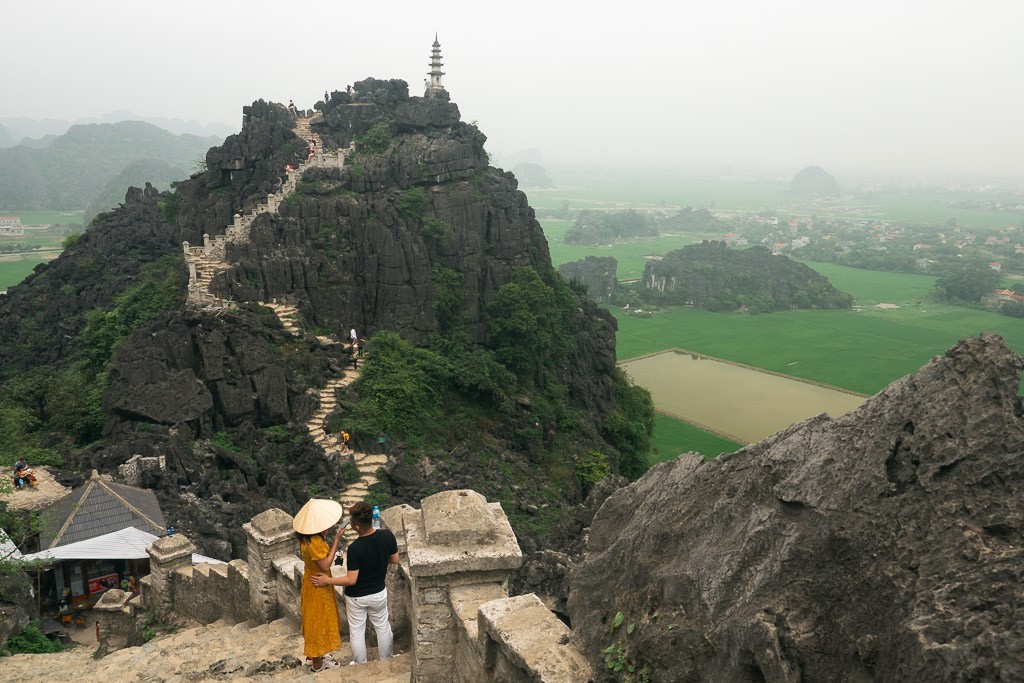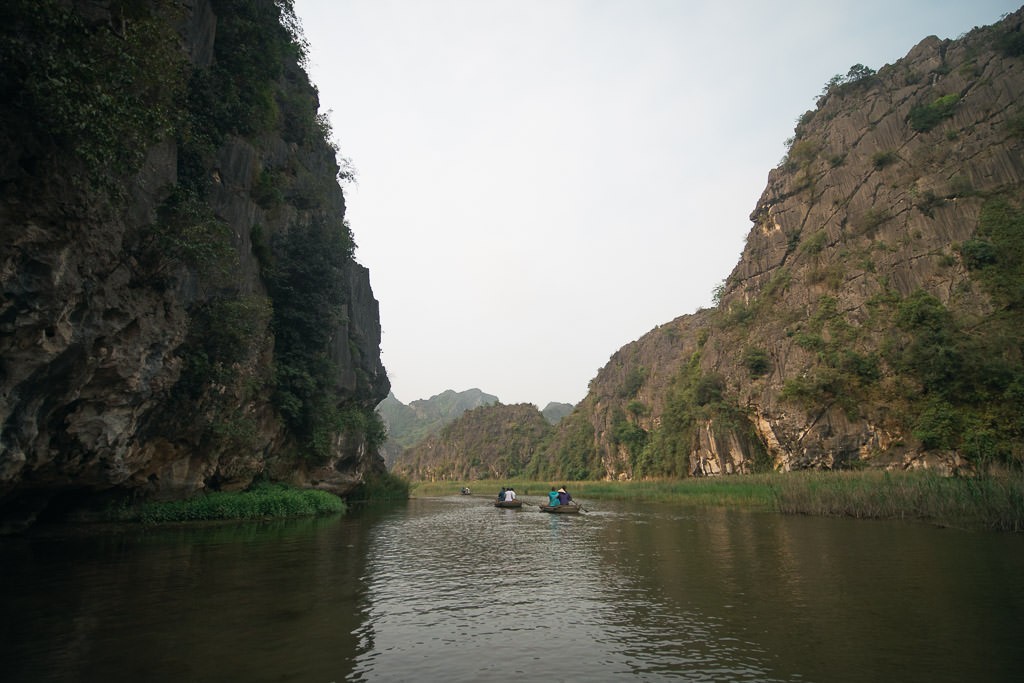Embarking on a trekking adventure in Vietnam? SIXT.VN is here to guide you through the most stunning and rewarding routes. We offer comprehensive travel guidance, convenient airport transfers, and a wide selection of hotels and tours, ensuring an unforgettable experience in Vietnam. Explore the hidden gems of Vietnam and enjoy the natural beauty with our expert travel tips and convenient services.
1. Discovering Vietnam’s Untamed Beauty: Trekking Adventures Await
Vietnam, a land of breathtaking landscapes and vibrant culture, offers a plethora of trekking opportunities for adventurers of all levels. From the rugged mountains of the north to the lush jungles of the south, there’s a trail waiting to be explored. According to the Vietnam National Administration of Tourism, the number of international tourists interested in adventure tourism has increased by 15-20% annually over the past five years, highlighting the growing appeal of exploring Vietnam’s natural wonders.
2. Why Choose Trekking in Vietnam?
Trekking in Vietnam provides an immersive experience, allowing you to connect with nature and discover the country’s diverse ecosystems. According to a 2022 report by the Adventure Travel Trade Association (ATTA), cultural immersion and nature-based activities are primary motivators for adventure travelers, making Vietnam an ideal destination.
Here are some compelling reasons to consider trekking in Vietnam:
- Stunning Scenery: Witness breathtaking views of rice terraces, towering mountains, and cascading waterfalls.
- Cultural Immersion: Interact with local communities and learn about their unique traditions and way of life.
- Physical Challenge: Test your endurance and enjoy the satisfaction of conquering challenging trails.
- Affordable Adventure: Vietnam offers excellent value for money, making it an accessible destination for budget-conscious travelers.
3. Top Trekking Destinations in Vietnam
3.1. Sapa: The Queen of Northern Treks
Sapa, located in the Hoàng Liên Son Mountains, is arguably the most popular trekking destination in Vietnam. Renowned for its stunning rice terraces and vibrant ethnic minority cultures, Sapa offers a range of trails catering to different fitness levels. According to statistics from the Sapa Tourism Office, the region welcomes over 2 million visitors annually, a testament to its enduring appeal.
3.1.1. Popular Sapa Trekking Routes:
- Easy: Cat Cat Village, Lao Chai Village, Ta Van Village (2-3 days)
- Moderate: Sapa to Fansipan Peak Base Camp (3-4 days)
- Challenging: Fansipan Peak Ascent (2-3 days) – Requires good physical fitness.
3.1.2. Key Considerations for Trekking in Sapa:
- Best Time to Visit: September to November and March to May for pleasant weather.
- Permits: Required for certain trekking routes, especially those within national parks.
- Guides: Highly recommended, especially for longer or more challenging treks.
- Accommodation: Homestays and hotels are available in Sapa town and surrounding villages.
3.2. Ha Giang: The Final Frontier
Ha Giang, located in the far north of Vietnam, is a hidden gem for intrepid trekkers. With its dramatic landscapes, winding mountain passes, and remote villages, Ha Giang offers an off-the-beaten-path experience. A 2023 report by Ha Giang’s Department of Culture, Sports and Tourism indicates a significant increase in tourist arrivals, showcasing the region’s growing popularity among adventure seekers.
3.2.1. Popular Ha Giang Trekking Routes:
- Easy to Moderate: Dong Van Karst Plateau Geopark Loop (3-5 days)
- Challenging: Ma Pi Leng Pass Trek (2-3 days)
- Very Challenging: Tay Con Linh Mountain Ascent (3-4 days) – For experienced trekkers only.
3.2.2. Key Considerations for Trekking in Ha Giang:
- Best Time to Visit: September to November and March to May for dry weather.
- Permits: Required for certain areas, especially near the Chinese border.
- Transportation: Motorbike is the most popular way to explore Ha Giang. SIXT.VN can arrange private car transfers from Hanoi to Ha Giang.
- Accommodation: Guesthouses and homestays are available in towns and villages along the trekking routes.
3.3. Cao Bang: Waterfalls and Caves
Cao Bang, located in northeastern Vietnam, is a land of stunning waterfalls, impressive caves, and lush forests. Trekking in Cao Bang offers a chance to discover the region’s natural beauty and explore its rich history and culture. According to the Cao Bang Tourism Promotion Center, the province is actively promoting sustainable tourism practices to preserve its natural environment.
3.3.1. Popular Cao Bang Trekking Routes:
- Easy: Ban Gioc Waterfall Area (1-2 days)
- Moderate: Nguom Ngao Cave and surrounding villages (2-3 days)
- Challenging: Phia Oac-Phia Den National Park (3-4 days)
3.3.2. Key Considerations for Trekking in Cao Bang:
- Best Time to Visit: September to November and March to May for pleasant weather.
- Transportation: Bus or private car from Hanoi. SIXT.VN offers convenient and reliable transportation options.
- Accommodation: Hotels and guesthouses are available in Cao Bang city and nearby towns.
- Local Guides: Recommended for exploring the more remote areas.
3.4. Na Hang and Lam Binh: Hidden Gems of Tuyen Quang
Na Hang and Lam Binh, located in Tuyen Quang province, are relatively undiscovered trekking destinations offering a unique blend of natural beauty and cultural immersion. With their pristine lakes, verdant forests, and ethnic minority villages, Na Hang and Lam Binh provide a tranquil escape from the crowds.
3.4.1. Popular Na Hang and Lam Binh Trekking Routes:
- Easy to Moderate: Na Hang Lake Boat Tour and Village Trek (2-3 days)
- Moderate: Pac Bo Cave and surrounding area (2 days)
- Challenging: Trekking to the top of Gam Mountain (3 days)
3.4.2. Key Considerations for Trekking in Na Hang and Lam Binh:
- Best Time to Visit: October to December and March to May for dry weather.
- Transportation: Bus or private car from Hanoi. SIXT.VN can arrange transportation to these remote locations.
- Accommodation: Homestays are the most common option in Na Hang and Lam Binh.
- Local Guides: Essential for navigating the trails and interacting with local communities.
3.5. Cat Ba National Park: Island Adventures
Cat Ba National Park, located on Cat Ba Island in Haiphong province, offers a unique trekking experience combining jungle trails with stunning coastal scenery. With its diverse flora and fauna, Cat Ba National Park is a haven for nature lovers. According to the park’s management board, sustainable tourism initiatives are in place to protect the island’s fragile ecosystem.
3.5.1. Popular Cat Ba National Park Trekking Routes:
- Easy: Short trails within the park (1-2 hours)
- Moderate: Trekking to the summit of Ngu Lam Peak (3-4 hours)
- Challenging: Cross-island trek (6-8 hours)
3.5.2. Key Considerations for Trekking in Cat Ba National Park:
- Best Time to Visit: March to May and September to November for pleasant weather.
- Permits: Required to enter the national park.
- Accommodation: Hotels and guesthouses are available in Cat Ba town.
- Combine with other activities: Kayaking, rock climbing, and boat tours are also popular on Cat Ba Island.
3.6. Cuc Phuong National Park: Ancient Forests
Cuc Phuong National Park, located in Ninh Binh province, is Vietnam’s oldest national park and home to a rich diversity of plant and animal life. Trekking in Cuc Phuong offers a chance to explore ancient forests, discover hidden caves, and learn about the park’s conservation efforts. A 2021 study by the park’s research center highlighted the importance of community involvement in protecting Cuc Phuong’s biodiversity.
3.6.1. Popular Cuc Phuong National Park Trekking Routes:
- Easy: Short nature trails near the park center (1-2 hours)
- Moderate: Trekking to the Thousand-Year-Old Tree (4-5 hours)
- Challenging: Three-day trek through the park (3 days)
3.6.2. Key Considerations for Trekking in Cuc Phuong National Park:
- Best Time to Visit: Dry season (October to April).
- Permits: Required to enter the national park.
- Accommodation: Guesthouses and bungalows are available within the park.
- Wildlife spotting: Keep an eye out for primates, birds, and other wildlife.
3.7. Bach Ma National Park: Cloud Forest Hikes
Bach Ma National Park, located in Thua Thien Hue province, is a mountainous park known for its cool climate, lush forests, and stunning waterfalls. Trekking in Bach Ma offers a chance to escape the heat and humidity of central Vietnam and enjoy panoramic views of the surrounding landscape. The park’s management is actively promoting eco-tourism activities that benefit local communities.
3.7.1. Popular Bach Ma National Park Trekking Routes:
- Easy: Five Lakes Trail (2-3 hours)
- Moderate: Trekking to the summit of Bach Ma Mountain (6-8 hours)
- Challenging: Trekking to Do Quyen Waterfall (Full day)
3.7.2. Key Considerations for Trekking in Bach Ma National Park:
- Best Time to Visit: Dry season (March to September).
- Permits: Required to enter the national park.
- Accommodation: Guesthouses are available near the park entrance.
- Birdwatching: Bach Ma is a paradise for birdwatchers.
3.8. Da Lat: Highlands Exploration
Da Lat, located in the Central Highlands, is a popular destination for its cool climate, beautiful lakes, and French colonial architecture. Trekking in Da Lat offers a chance to explore the surrounding hills and valleys, visit coffee plantations, and enjoy stunning views.
3.8.1. Popular Da Lat Trekking Routes:
- Easy: Langbiang Mountain (2-3 hours)
- Moderate: Trekking to Bidoup Nui Ba National Park (2-3 days)
- Challenging: Trekking to Elephant Mountain (Full day)
3.8.2. Key Considerations for Trekking in Da Lat:
- Best Time to Visit: Dry season (November to April).
- Accommodation: Plenty of hotels and guesthouses in Da Lat city.
- Coffee Tours: Combine your trek with a visit to a local coffee plantation.
- Flower Gardens: Da Lat is famous for its flower gardens.
3.9. Trekking in Ninh Binh
Ninh Binh, often called “Ha Long Bay on Land,” is famous for its stunning karst mountains rising from rice paddies. It’s a great alternative to the more touristy Halong Bay. While it’s best known for boat tours, it also offers beautiful areas for trekking.

According to a recent study by the Ninh Binh Tourism Department, the region has seen a 30% increase in international visitors over the past five years, indicating its growing popularity as a must-visit destination in Vietnam.
3.9.1. Highlights of Trekking in Ninh Binh:
- Trang An: Hike around the picturesque Trang An area, a UNESCO World Heritage site known for its stunning landscapes and tranquil atmosphere.
- Mua Cave: Climb the 500 steps to the top of Mua Cave for panoramic views of the surrounding countryside.

- Van Long Nature Reserve: Explore the Van Long Nature Reserve, a haven for wildlife, including the endangered Delacour’s langur. You can combine a boat trip with some light trekking.

3.9.2. Insider Tip:
Stay in Trang An rather than Tam Coc for a more peaceful and authentic experience. Trang An offers a serene escape amidst nature, allowing you to fully immerse yourself in the beauty of Ninh Binh’s landscapes.
4. Essential Trekking Tips for Vietnam
- Pack Appropriately: Lightweight hiking boots, moisture-wicking clothing, rain gear, sunscreen, insect repellent, and a first-aid kit are essential.
- Stay Hydrated: Drink plenty of water, especially in the hot and humid months.
- Be Aware of the Weather: Check the forecast before you go and be prepared for sudden changes in weather.
- Respect Local Customs: Dress modestly when visiting temples and pagodas.
- Learn Some Basic Vietnamese: Knowing a few basic phrases will enhance your interactions with locals.
- Book in Advance: Accommodation and tours can fill up quickly, especially during peak season. SIXT.VN simplifies this process with comprehensive booking services.
- Travel Insurance: Ensure you have adequate travel insurance that covers trekking activities.
- Physical Fitness: Assess your fitness level and choose treks that are appropriate for your abilities.
- Acclimatization: If trekking at high altitudes, allow time to acclimatize to avoid altitude sickness.
5. How SIXT.VN Can Enhance Your Trekking Experience
SIXT.VN is your trusted partner for planning a seamless and unforgettable trekking adventure in Vietnam.
- Airport Transfers: Arrive in comfort and style with our reliable airport transfer services.
- Hotel Bookings: Choose from a wide selection of hotels and guesthouses to suit your budget and preferences.
- Tour Packages: Discover our curated trekking tour packages designed to showcase the best of Vietnam’s natural beauty.
- Customized Itineraries: Let our travel experts create a personalized trekking itinerary tailored to your interests and fitness level.
- 24/7 Support: Enjoy peace of mind with our round-the-clock customer support.
6. Booking Your Trekking Adventure with SIXT.VN: A Step-by-Step Guide
- Visit SIXT.VN: Navigate to our website to explore our trekking tour options.
- Select Your Destination: Choose your preferred trekking destination from our list of top locations.
- Customize Your Tour: Tailor your itinerary to match your interests and fitness level.
- Book Your Accommodation: Select from our range of hotels and guesthouses.
- Confirm Your Booking: Review your details and confirm your reservation with our secure payment system.
- Prepare for Your Adventure: Receive essential pre-departure information and tips from our travel experts.
7. Addressing Common Concerns and Challenges
- Language Barrier: SIXT.VN provides support in multiple languages to assist you throughout your journey.
- Transportation Difficulties: Our airport transfer and private car services ensure seamless travel to your trekking destinations.
- Finding Reputable Guides: We partner with experienced and certified local guides who prioritize your safety and enjoyment.
- Cultural Sensitivity: SIXT.VN offers cultural awareness tips to help you respect local customs and traditions.
8. The Economic and Social Impact of Tourism
Tourism plays a vital role in Vietnam’s economic development. According to the General Statistics Office of Vietnam, tourism contributed approximately 9.2% to the country’s GDP in 2019, before the pandemic. Sustainable tourism practices, as promoted by organizations like SIXT.VN, ensure that tourism benefits local communities while minimizing environmental impact.
9. Embrace the Call of the Wild: Start Planning Your Trek Today
Vietnam’s stunning landscapes and rich cultural heritage await. Let SIXT.VN be your guide to an unforgettable trekking adventure. Contact us today to start planning your dream trip.
Address: 260 Cau Giay, Hanoi, Vietnam
Hotline/Whatsapp: +84 986 244 358
Website: SIXT.VN
10. FAQ: Your Trekking Questions Answered
10.1. What is the best time of year to trek in Vietnam?
The best time to trek in Vietnam is during the dry season, which varies depending on the region. Generally, September to November and March to May offer pleasant weather in most areas.
10.2. Do I need a visa to enter Vietnam?
Most nationalities require a visa to enter Vietnam. Check the visa requirements for your country before you travel. SIXT.VN can provide visa assistance if needed.
10.3. Are trekking permits required in Vietnam?
Trekking permits are required for certain areas, especially national parks and border regions. SIXT.VN can assist you with obtaining the necessary permits.
10.4. What should I pack for a trekking trip in Vietnam?
Pack lightweight hiking boots, moisture-wicking clothing, rain gear, sunscreen, insect repellent, a first-aid kit, and a hat.
10.5. Is it safe to trek in Vietnam?
Trekking in Vietnam is generally safe, but it’s essential to be aware of potential hazards such as slippery trails, wildlife, and weather changes. Hiring a local guide is recommended.
10.6. What is the local currency in Vietnam?
The local currency in Vietnam is the Vietnamese Dong (VND).
10.7. Can I use credit cards in Vietnam?
Credit cards are accepted in major cities and tourist areas, but cash is preferred in rural areas.
10.8. What is the tipping etiquette in Vietnam?
Tipping is not mandatory in Vietnam, but it is appreciated for good service.
10.9. What are some common Vietnamese phrases I should know?
- Xin chào (Hello)
- Cảm ơn (Thank you)
- Bao nhiêu tiền? (How much?)
- Tôi không hiểu (I don’t understand)
10.10. What is the voltage and plug type in Vietnam?
The voltage in Vietnam is 220V, and the plug types are A, C, and D. Bring a universal adapter if necessary.



